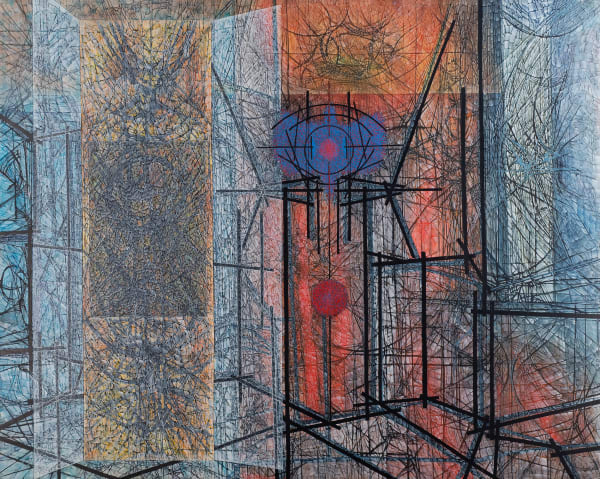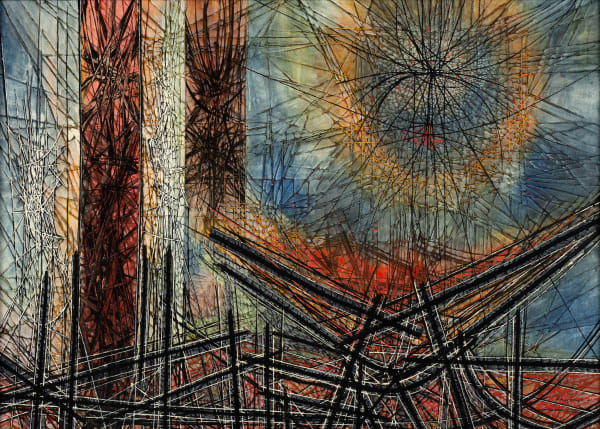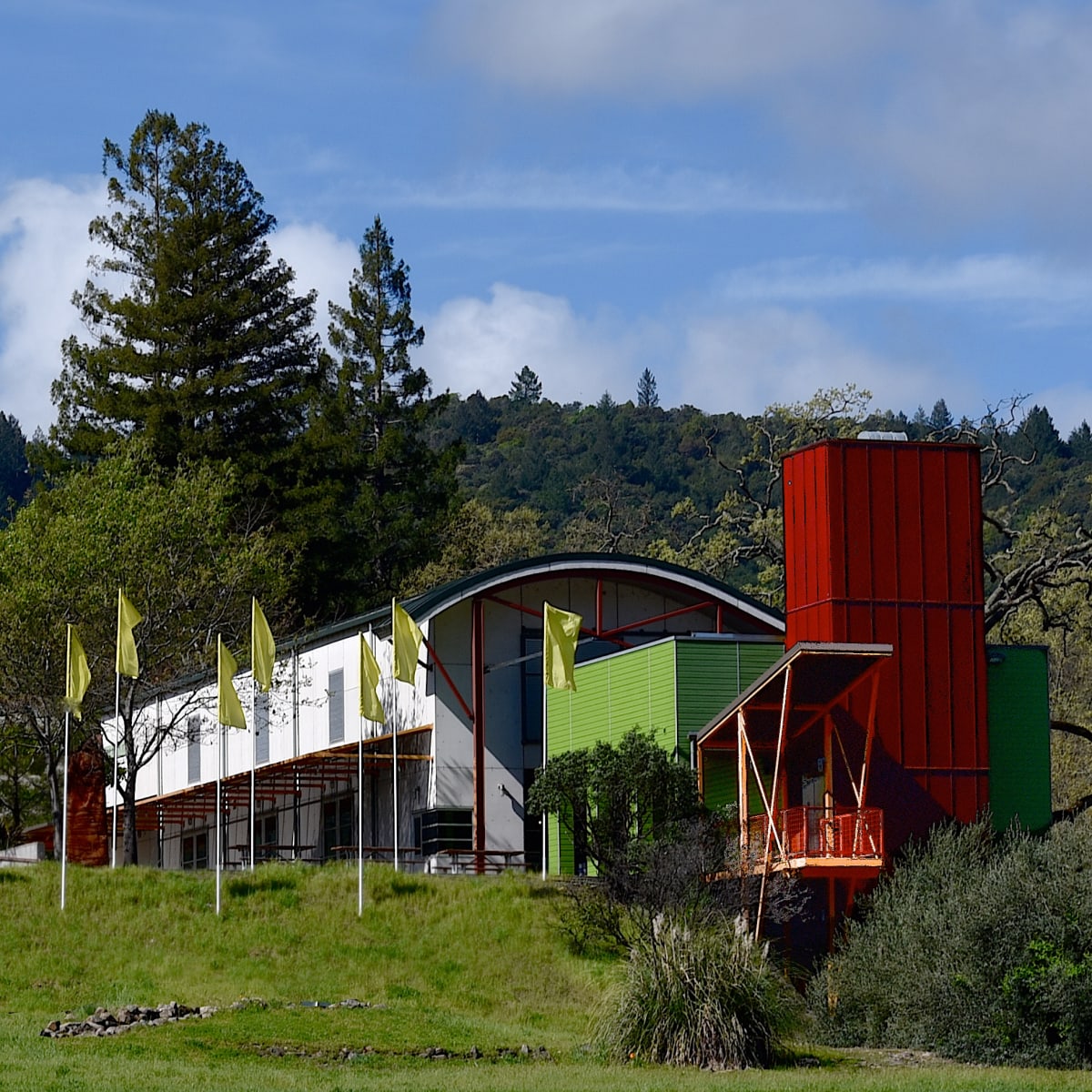What in Ernst's paintings holds the viewer's gaze, other than the fascinating intricacies of form, is the tension between the seen and the unseen, the coexistence of order and chaos, and that ultimate irresolvable mystery that is part of the human condition.
—Martica Sawin
Having been forced to move from his native Germany to New York in 1938 when he was 18 years old, Jimmy Ernst joined a group of young artists experimenting with surrealist painting techniques in New York City in the mid-20th century and became a U.S. citizen in 1952. His art is a beautiful combination of his early artistic education, his love and knowledge of Native American culture, jazz music, and a refined meticulousness (perhaps derived from his early work as a typesetter). Jimmy chose to develop his own path at the center of Surrealism and Abstract Expressionism, his European background and his embrace of his new U.S. home. Jimmy would often refer to his inner eye as the fountainhead of his work. You can see his interests in scientific theory, physics, atomic theory, structure of matter, combined with his musical experiences with American jazz. He passed away in 1984, just following the publication of his exceptional autobiography, A Not-So-Still Life.
Hans-Ulrich Ernst, later known as "Jimmy," was born to Dada and Surrealist artist Max Ernst, and art historian and journalist Louise Straus-Ernst, who divorce when Jimmy is two. Max moves to Paris, as he and his mother remain in Cologne. Raised in an artistic milieu, as anti-Semitism rises after Hitler becomes Chancellor of Germany, Louise forced to flee to Paris while Jimmy stays in Germany with grandparents. Apprentices with publisher Hans Augustin, near Hamburg. In 1937, on a trip to Paris he sees Picasso's Guernica which moves him to perceive an artist's role as an agent of change. In 1938 Augustin gets Jimmy visa and passage to the United States, where he discovers Hopi rituals, jazz, and science. Works at the Museum of Modern Art mailroom and paints at night. Befriends members of the avant-garde, notably, William and Ethel Baziotes. Attends the 1941 lectures on surrealism by Gordon Onslow Ford at the New School of Social Research.
Max Ernst arrives in the U.S. with Peggy Guggenheim. His mother does not survive the war. Guggenheim opens her gallery Art of This Century with Jimmy as director. With Eleanor Lust opens Norlyst Gallery in 1943, which also hosts three solo shows by Ernst. MoMA purchases a painting, The Flying Dutchman. Ernst integrates and bridges the two major influences of Surrealism and Abstract Expressionism, infused with the painstaking detail he learned as a typesetter. His work will be marked by an almost obsessively intricate grid of lines, under which one discerns forms and shapes. In 1984, he dies shortly after his autobiography, A Not So Still Life, is published.












